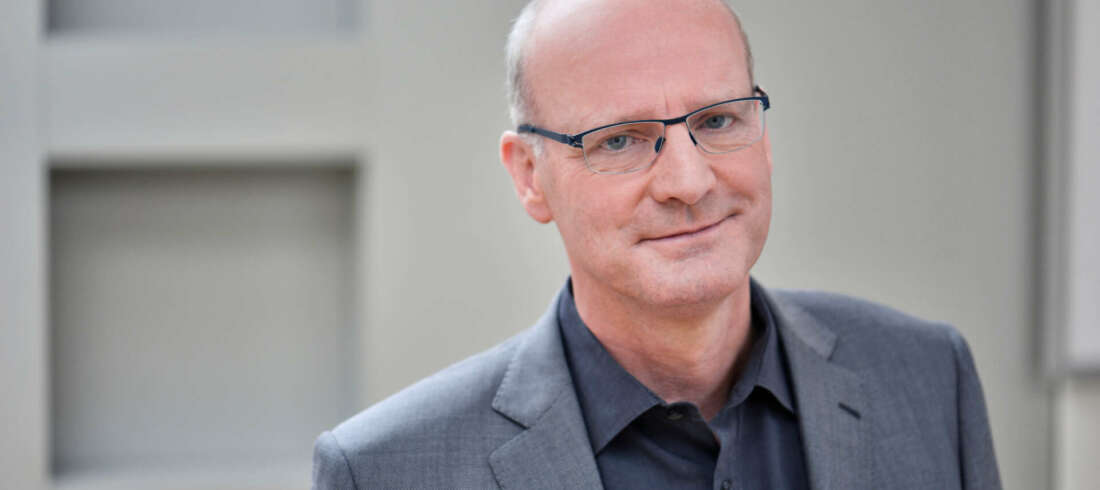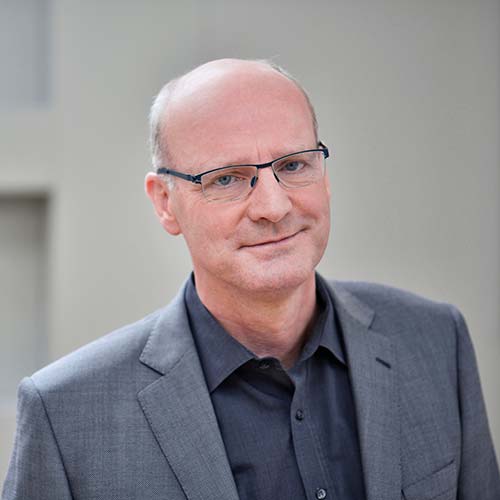Stephan Urlings is Managing Partner and Head of International Research at the Rheingold Institute in Cologne. We talk to him about the currently quite fertile ground for Quali research, about cooperations as well as smart tools that complement the classic methods and how the institute is making itself fit for the future.
The interview appeared in planning&analysis 1/2023.
It feels like every service provider in the industry is currently doing qualitative research - from open-ended questions in a questionnaire to communities to in-depth interviews lasting several hours. Where are the differences? What would you still call qualitative research? And what, in fact, is no longer?
Yes, qualitative research is very much in vogue right now. I think that has something to do with the very turbulent times. We actually have a turn of the times. I can't remember - and we've been doing this for over 35 years now - that there were times when you really didn't know where the journey was going. You don't get that kind of thing out of a questionnaire, you don't even know what questions to ask. Such times are fertile ground for quali research. The procedures themselves do not make quali research. If one then only evaluates them superficially, that is not Quali from our point of view. It is important to have a reference system. A frame of reference that is scientifically derived.
Your method is based on Wilhelm Salber's morphology. Can you explain the method briefly, for example as morphology for dummies?
The context is central. The situation in which I buy or use something is much more determinative for action than the person himself and his characteristics. When I spoon a yogurt, I'm in a different frame of mind than when I - say - devour a juicy steak. The motives and imagery are quite different and much of it is unconscious. What we do is based on morphology, but we have developed the method a lot. Today we call it the Rheingold method. In the eighties, nineties, the target groups were also easier to grasp. Today, everything is much more fluid. To understand the hybrid consumer, we need flexible methods. We have developed these methods, and we also teach them at our Rheingold Academy, because we have made the experience that quantitative research dominates in the scientific environment and in teaching at universities.
And how do you go about your method?
We look at what people tell us, analyze it systematically, convert it into explanatory models, and then we can come up with reliable recommendations. But it's the same with quantitative methods. They only work if I know the mathematics and statistics. With quali, I have to know how to evaluate it correctly, otherwise I end up with anecdotal evidence, and that's dangerous.
But it is noticeable that the Rheingold Institute is also publishing quantitative results more and more frequently? Why is that? Do you no longer trust your qualitative research?
We trust our research more than ever. It's a misconception that quantitative research is proof of qualitative research - it's different data, different insights. Once we've found a segmentation or typology, it can be important for the client to do a potential estimate sometimes. It's more about quantifying the results than proving them. If we extract motives with our research, then the question is how strong are these purchase-decisive and perform a driver analysis, for example. We have never had any fear of contact with quant. Qual can give certain answers and quant can give certain answers. It's not a question of better and worse.
Do you have the expertise in-house or do you work with another institute?
We started with a cooperation with another institute. Now we have a small but fine quant team with people - and this is a privilege - who also know morphology. We are thinking about expanding that. But we will always make sure that it is an integrated study from a single source and that one recognizes the Rheingold method.
So the Rheingold Institute remains first and foremost a Qual Institute. Do I understand that correctly?
It's about getting good results. They must have depth and provide inspiration. Simply counting something doesn't make sense from our point of view. We are conducting more and more integrated studies. It always depends on the question. So it can make sense to combine a three-hour in-depth interview with online diaries or with WhatsApp voice messages sent over a longer period of time by subjects. So I'd almost put quality on the quality of the results, that they are really meaningful, valid, suitable for forecasting and give customers actionable recommendations for their marketing decision.
OK, then the institute has opened up to new methods. How much more does that need to happen in the future So what does progress look like at the Rheingold Institute? How is that with AI?
We are constantly exploring the market, evaluating methods and have launched our deepEmotions tool. For example, we are now working with Tawny on the implicit measurement of emotions. However, we combine that with in-depth interviews, because we don't trust measurement alone. I would also caution against that. Some AI tools promise the moon. I like to call this the messiah phase. For example, there are advertising tests that no longer involve a test person at all, but simply a computer with AI-based algorithms that compares the advertising you show it with a database. It may be that this works to some extent for standard advertising. But I personally believe that such tools can also be a killer for innovation and creativity. Think of the curvy Dove models. I could imagine that they would have failed such a test, even though it was a good campaign.
Please tell us a bit more about how you proceed, with deepEmotions? Do you first conduct in-depth interviews and then additionally test with the Tawny tool?
The main focus is on the advertising impact of print ads or commercials. We start with around twelve in-depth interviews, then we brief Tawny, who again plays the spot or shows the ad to around 100 test subjects in an online panel. And then we look at it again together and merge the analyses. Then you can see exactly where the viewers were irritated, you can see a frown or tiny movements. It's not necessarily about the big emotions, i.e. the exaggerated laughter, but about micro-expressions that are very subtle, but which the Tawny tool can recognize. So you can find out from the many explorations we do every year whether the brand represents well, whether the branding and the message are understood. The important thing is: do the results match the impressions from the interviews? In that respect, it's a multi-layered analysis, you have to interpret: What happens at which point? So this is a tool about which we say: This is understood, it has solid scientific backing, we are convinced of this and can integrate it well into our portfolio. We haven't had it on the market that long, but so far we've had good experience with it, and for customers it's a quick, relatively inexpensive tool.
Have you looked at different providers of emotional AI tools?
Yes, we did an internal validation. What we liked most is that it's not a DIY tool. Tawny has experienced professionals who can analyze the implicit measurement. It's important that we have a shoulder of experts there: We do the in-depth interviews, Tawny does the emotional analysis, two procedures that check and complement each other. This produces better results. In my view, cooperation is an important point for modern market research.
How must a premium provider like the Rheingold Institute change, open up, respond to the market in the future?
I basically see two currents. One is that all tactical decisions in the marketing mix, whether it's a new package or advertising, have to be examined ever more quickly, ever more cheaply. That's where things are moving more toward automation. There will probably be fewer and fewer large studies for this, because they put a lot of strain on budgets. On the other hand, the world is changing rapidly, and we all don't know in which direction. The key word is "turning times. For companies, this is a great uncertainty. As a strategic partner to companies, we are concerned about the future of markets. We have developed the "Seamless Consumer" model. This means that from our years of research into consumer motivations and trends, we have derived how markets and consumers will develop over the next ten years. To this end, we have drawn up hypotheses and formulated scenarios and asked companies whether they are prepared for them. Do brands have answers to such developments? Hyperpersonalization, for example. We no longer buy off-the-shelf products, but those that are tailored precisely to our personal needs - the keyword here is self-optimization. Or when the boundaries between retail and brand become blurred at some point, when the purchasing process is no longer hybrid but truly "seamless.
Do you have an example of how this could be done?
We believe that in mobility or beauty and health, for example, people will no longer buy products, but holistic solutions for their life tasks. They will then be customers of a health provider, for example, who may even offer DNA tests, psychological tests, and skin and hair analyses, and who will have put together an entire program including services and apps for health and beauty. Then the product is still a component, but only a small one. These platforms will get tremendous market power, and if branded companies are not prepared for that, then they will have problems. These are rather the questions that good market research should raise today.
Then we wish you every success on your new paths and thank you for the interview.
The interview was conducted by Sabine Hedewig-Mohr
You would like to learn more about rheingold deepemotions? Here we have information for you! https://www.rheingold-marktforschung.de/rheingold-deepemotions/





